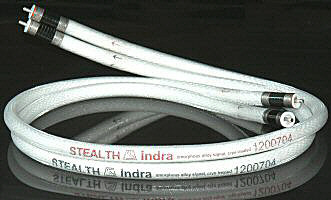 By Asim Waqar
By Asim Waqar
Stealth Audio Cables from Derwood Maryland have a line of audio cables named Indra. These Indra cables are amorphous. Allow me to explain what this means and what the benefits are. Then, and only then will I tell you the price.
Dictionary.com’s fourth entry for amorphous reads : “Lacking distinct crystalline structure.”
The crystalline structure found in even the most high-end cables is the cause of signal degradation. The Indra cables are manufactured by first heating a metal and then cooling it to minus 192 degrees with liquid nitrogen. Then, a hot metal alloy ( 1,090 degrees) is poured on. The rapid cooling of this alloy prevents any signal degrading crystalline structures to form. Apparently this design has its roots in the Russian military or space program.
The result is a 0.025mm in diameter — 10 times lower in gauge than gold wire – cable that facilitates noise and artifact free audio transmission . That is driving audiophiles to say things about these cables like
“You could say that the Indra caused a kind of profound whole-body relaxation of the music. Music now appeared to be free of effort, free of former reminders of electronic artifacts. It floated in expanded space as pure sounds rather than being mechanically processed and thus left with a certain tension, grit or texture as part of that processing.”
( Srajan Ebaen)
Check out the product page here
MSRP: $5750.00 for a one meter pair.










